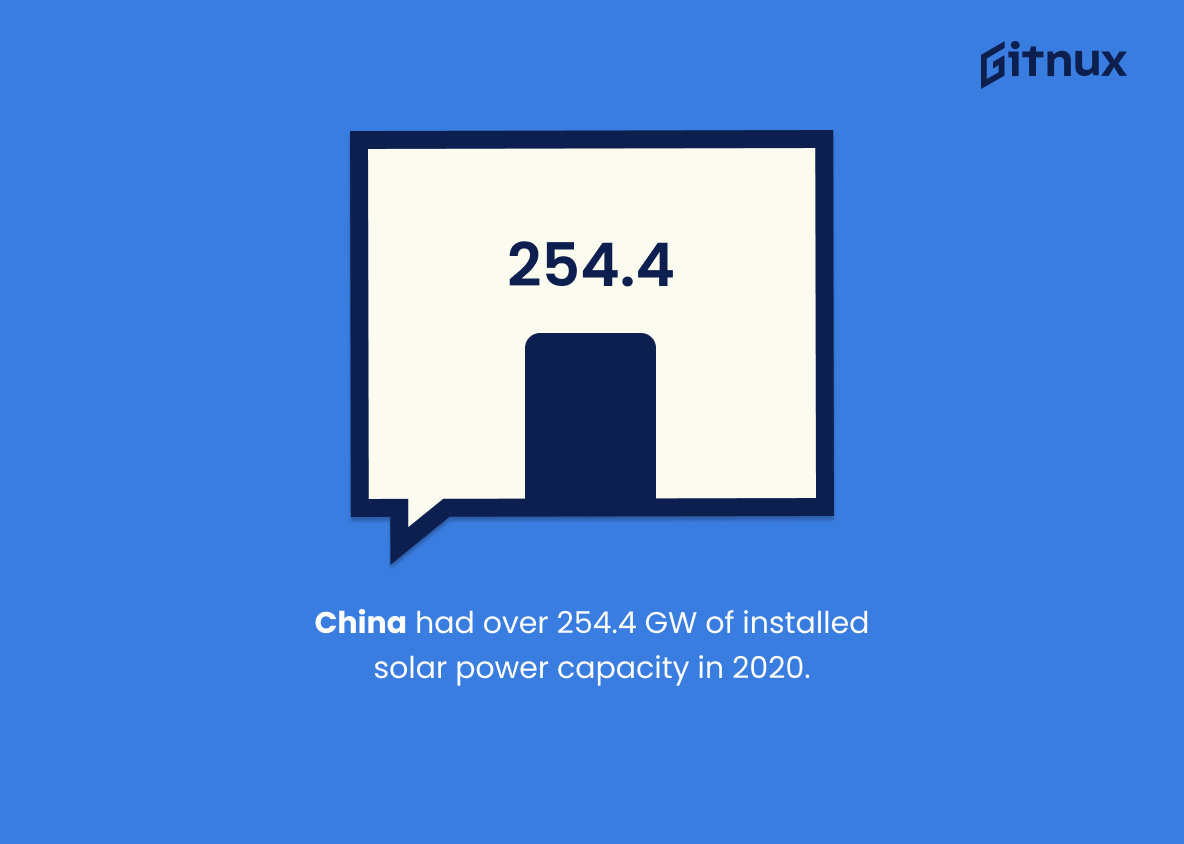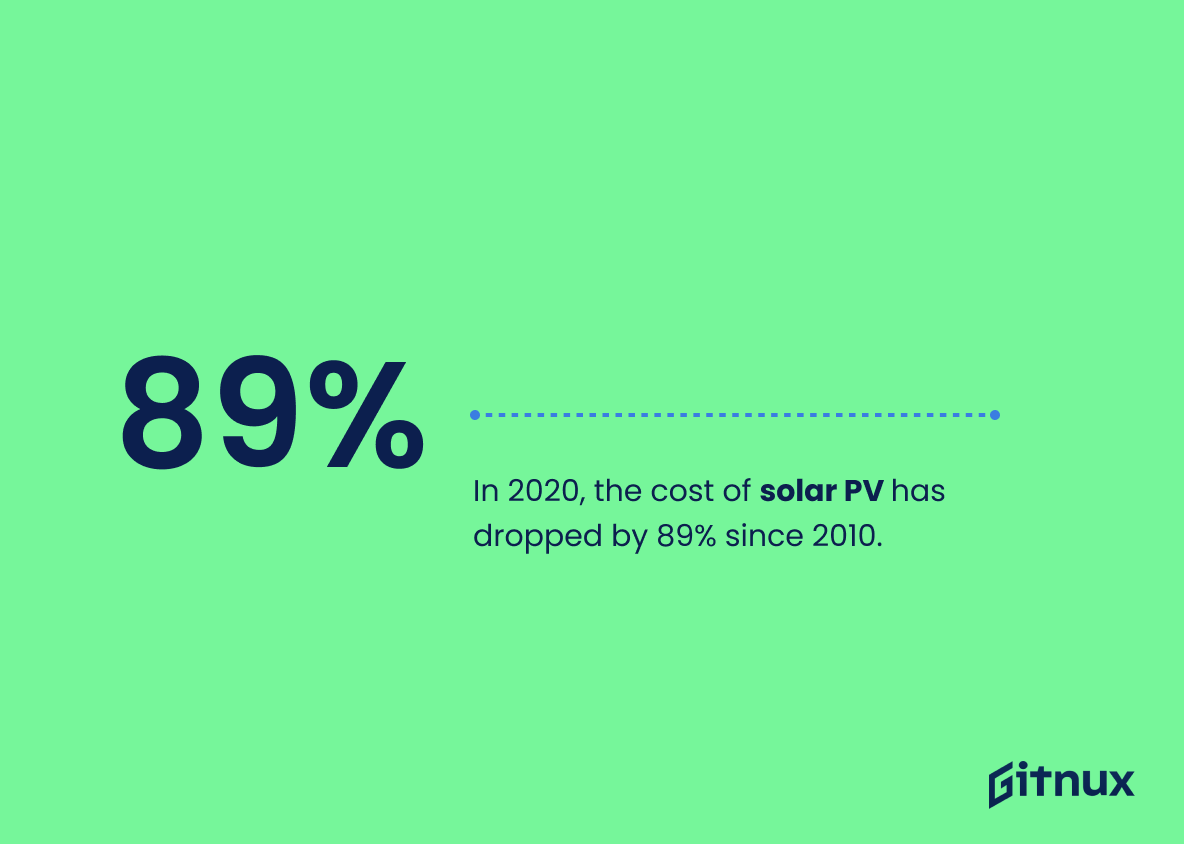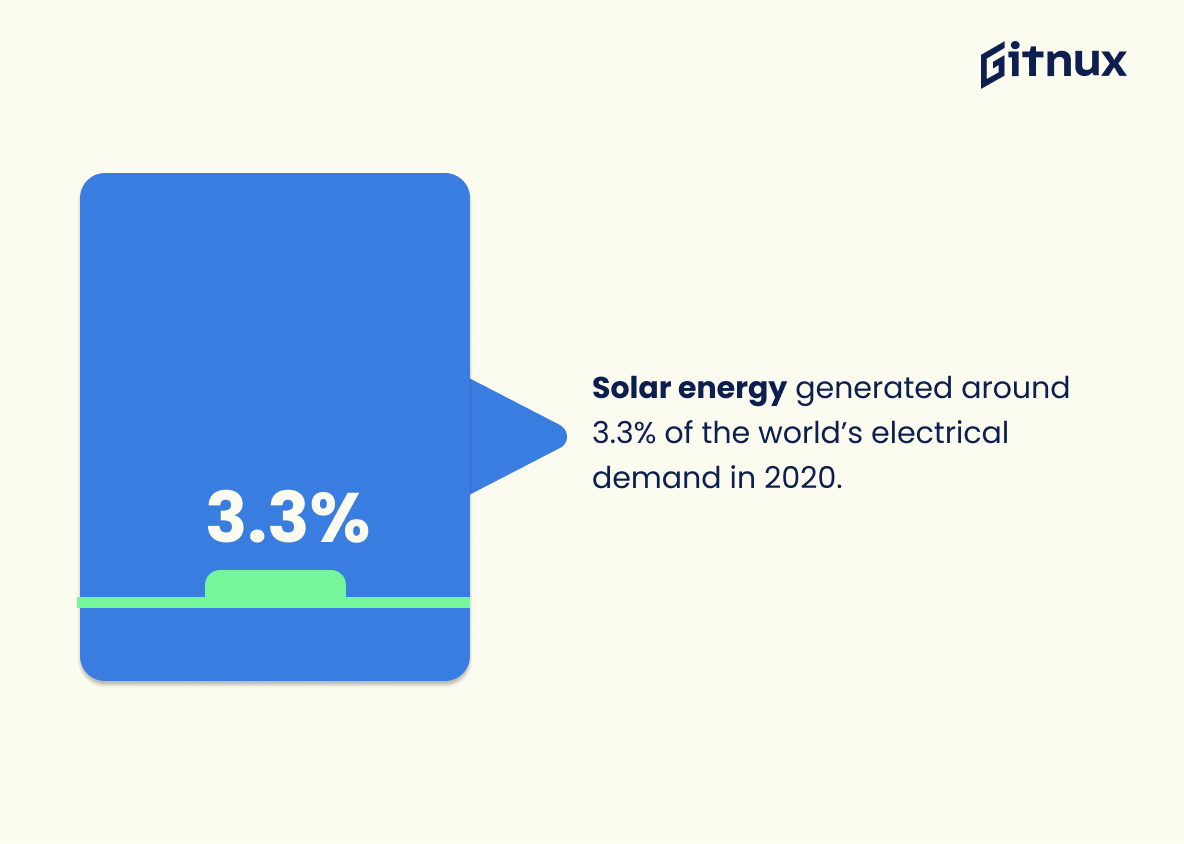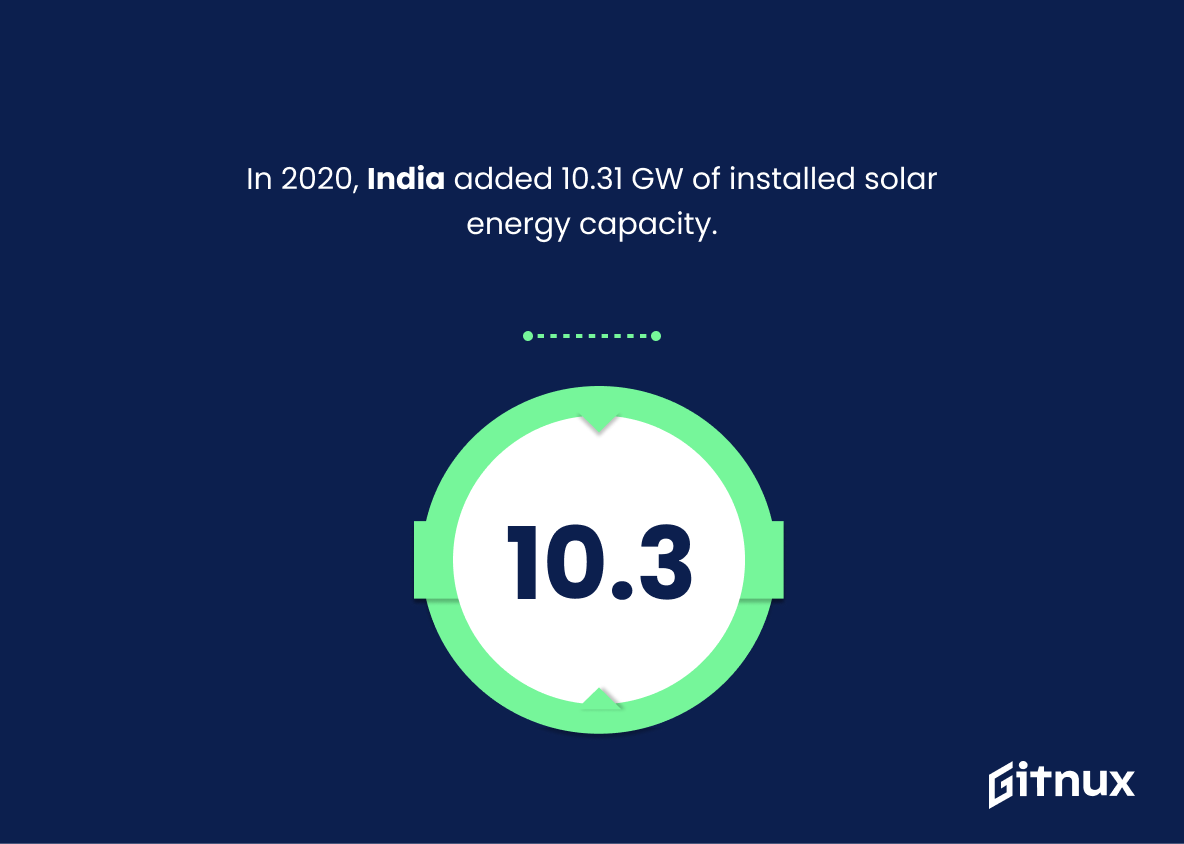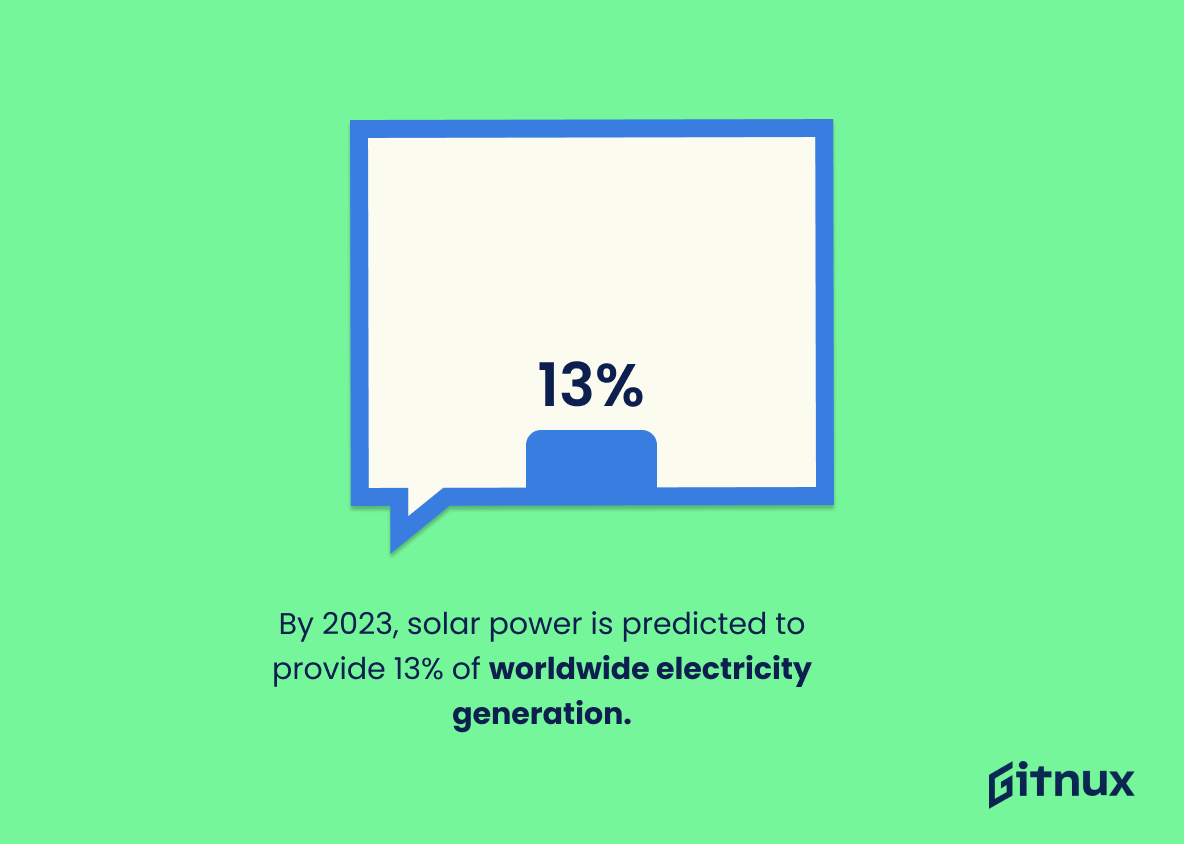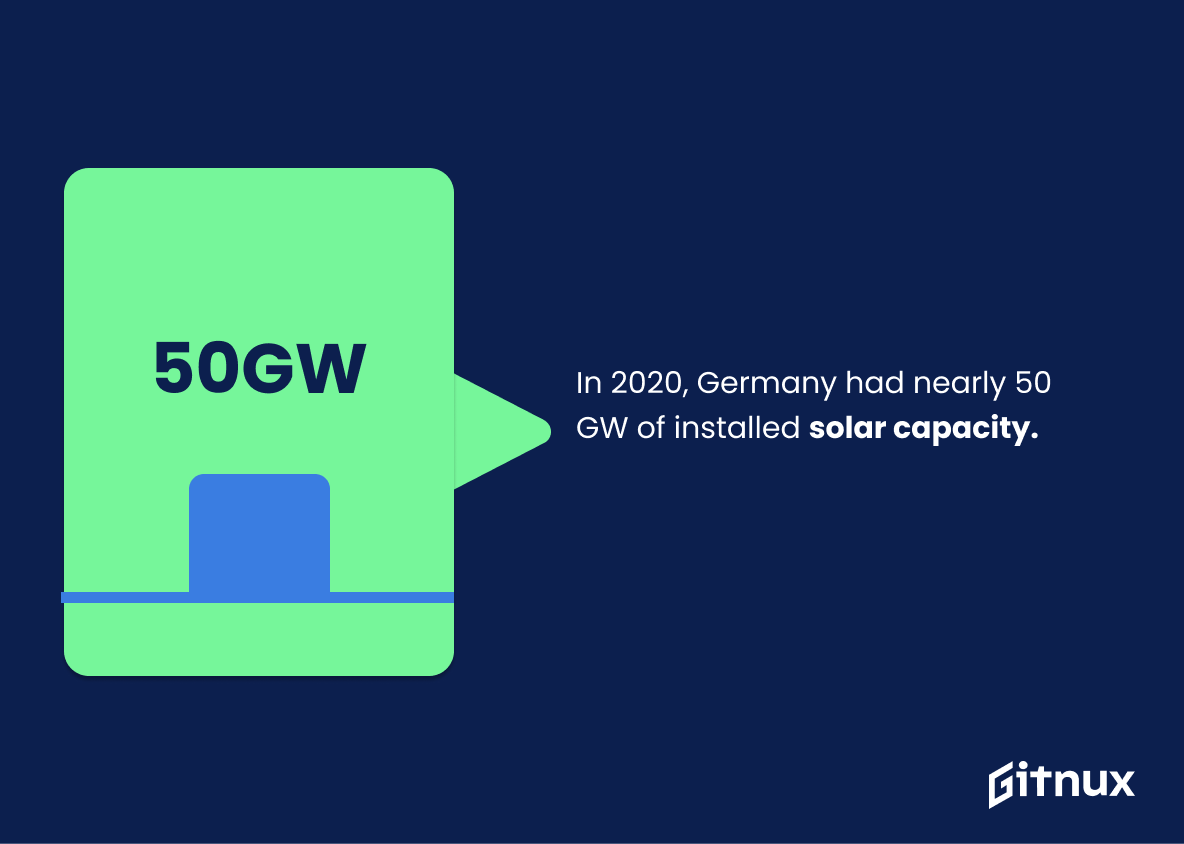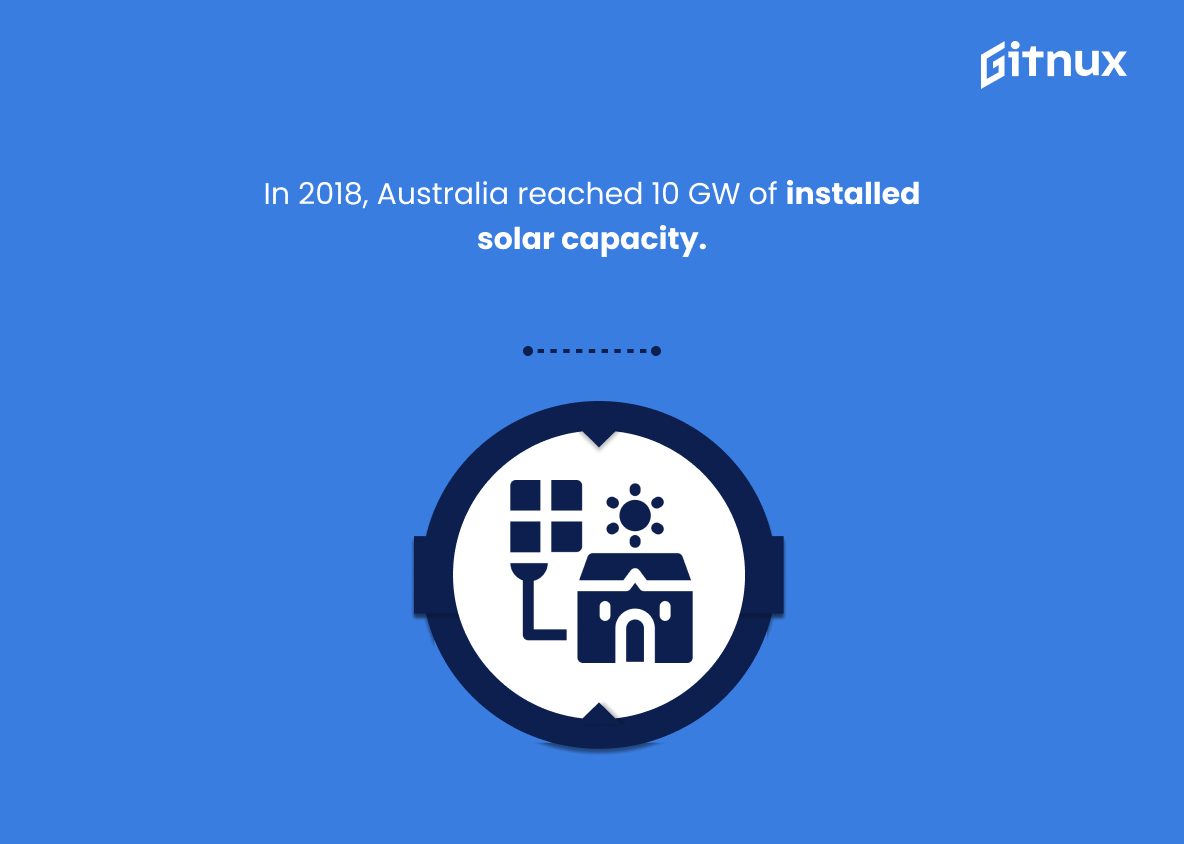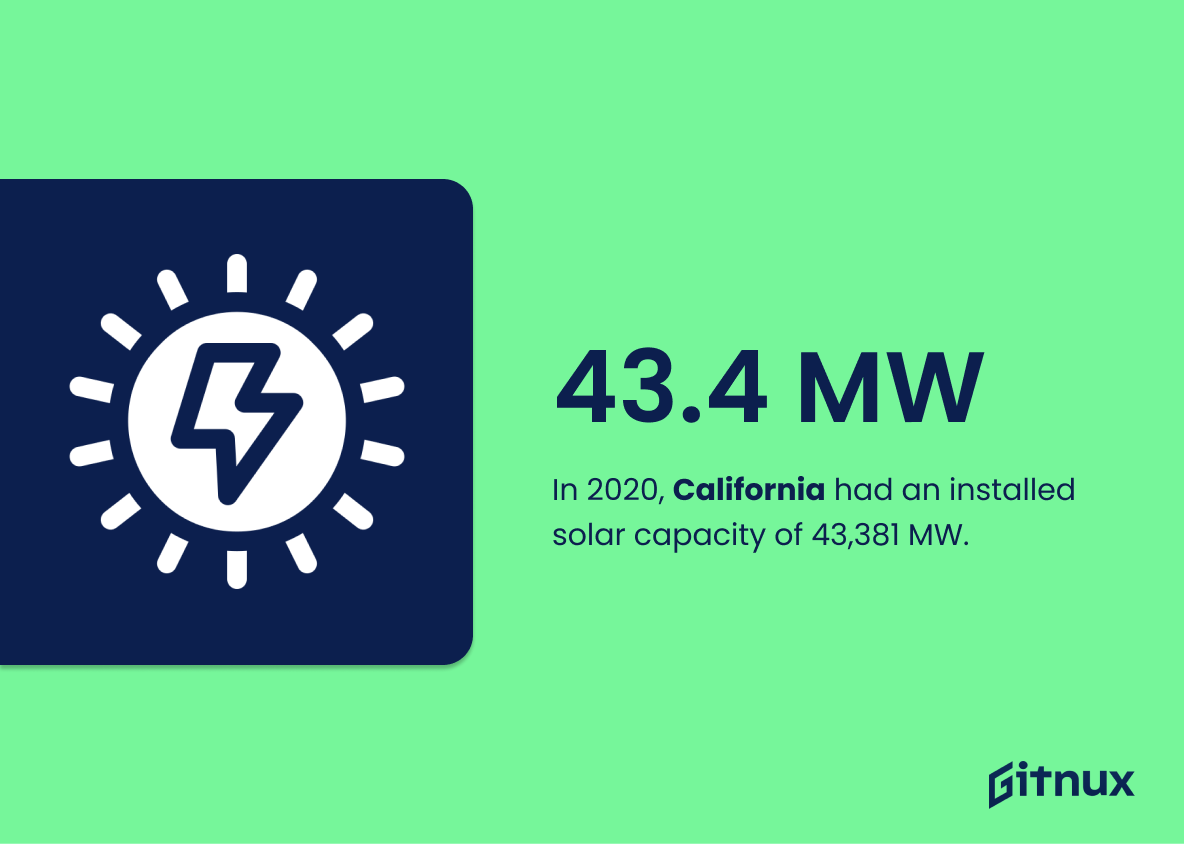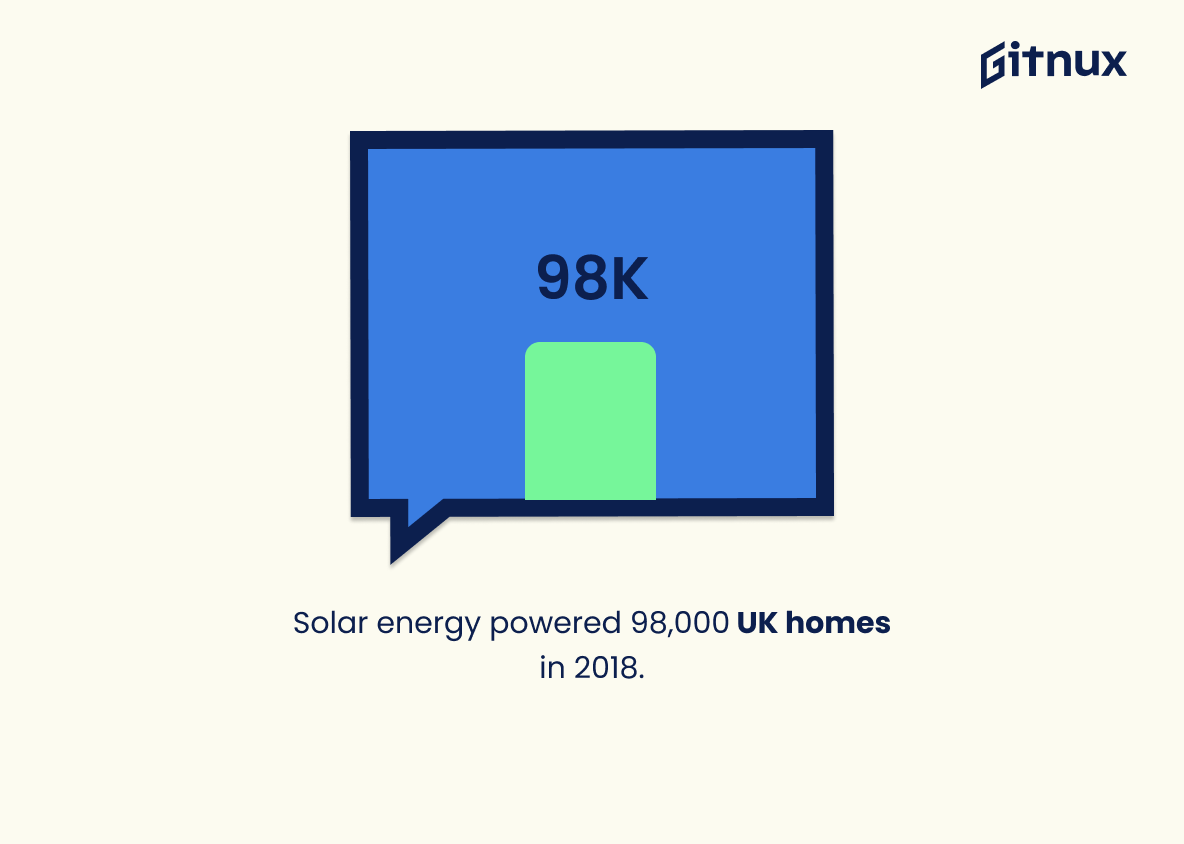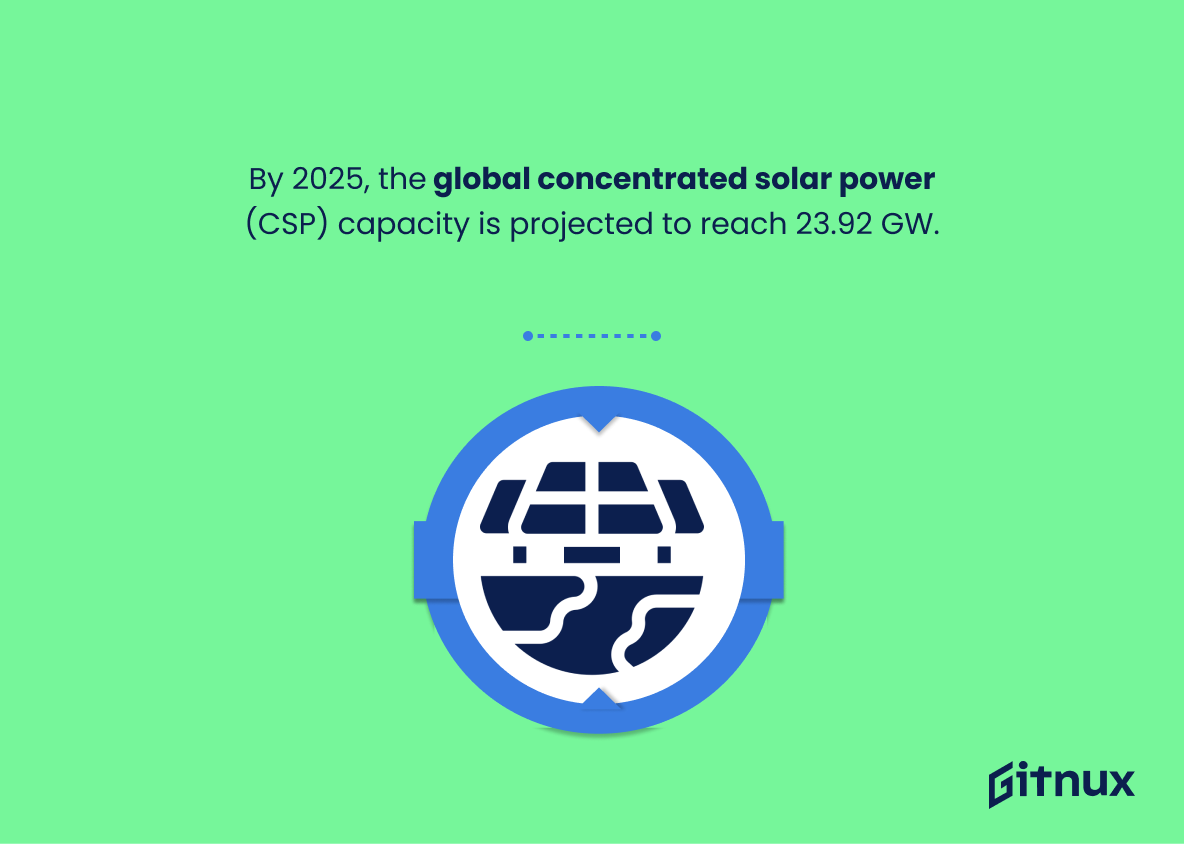The world is rapidly transitioning to renewable energy sources, and solar power has become one of the most popular options. Solar energy offers a clean, sustainable source of electricity that can be used in both residential and commercial settings. In this blog post, we will explore some interesting statistics about solar energy from around the world. We’ll look at global capacity figures for 2020 as well as projections for future growth in various countries and regions. Additionally, we’ll examine how much costs have dropped since 2010 and what percentage of total electrical demand was met by solar last year. Finally, we’ll discuss some impressive milestones such as the largest single-site plant currently operating worldwide and South Africa’s ambitious plans to increase its installed capacity over the next decade.
This statistic is a testament to the incredible growth of solar energy in recent years. It shows that solar energy is becoming an increasingly viable option for powering our world, and that its potential is only growing. This statistic is a powerful reminder of the importance of investing in renewable energy sources like solar, and of the potential for a brighter, more sustainable future.
In 2020, the global solar market increased by 43%.
This statistic is a testament to the growing popularity of solar energy. It shows that more and more people are turning to solar energy as a viable source of energy, which is a positive sign for the future of renewable energy. This statistic is a clear indication that solar energy is becoming increasingly accessible and cost-effective, making it an attractive option for many.
Solar Energy Statistics Overview
The United States has about 97.2 GW of installed solar capacity.
This statistic is a testament to the progress that has been made in the solar energy industry. It shows that the United States is leading the way in solar energy production, and that the technology is becoming increasingly viable as a source of renewable energy. This statistic is a powerful reminder that solar energy is a viable option for powering our homes and businesses, and that it is becoming increasingly accessible.
China had over 254.4 GW of installed solar power capacity in 2020.
This statistic is a testament to the incredible progress China has made in the realm of solar energy. It shows that the country is leading the way in terms of solar energy adoption, and is a clear indication that solar energy is becoming an increasingly viable option for countries looking to reduce their reliance on fossil fuels.
In 2020, the cost of solar PV has dropped by 89% since 2010.
This statistic is a testament to the incredible progress made in solar energy technology over the past decade. It demonstrates that solar energy is becoming increasingly more affordable and accessible, making it a viable option for many households and businesses. This is an important development in the world of renewable energy, and one that should be celebrated.
Solar energy generated around 3.3% of the world’s electrical demand in 2020.
This statistic is a testament to the growing importance of solar energy in the global energy landscape. It shows that solar energy is becoming an increasingly viable option for meeting the world’s electrical demand, and that its potential is being realized. This is an encouraging sign for those who are looking to reduce their reliance on fossil fuels and transition to renewable energy sources.
In 2020, India added 10.31 GW of installed solar energy capacity.
This statistic is a testament to the progress India has made in the realm of solar energy. It shows that the country is taking the initiative to invest in renewable energy sources, which is a crucial step in the fight against climate change. This statistic is a reminder that solar energy is a viable and increasingly popular option for powering our world.
The global solar energy market is projected to reach 223.3 billion USD by 2026.
This statistic is a testament to the immense potential of solar energy, indicating that the global solar energy market is expected to experience tremendous growth in the coming years. It is a clear indication that solar energy is becoming increasingly popular and is being embraced by more and more people around the world. This statistic is a powerful reminder of the importance of investing in solar energy and the potential it holds for the future.
By 2023, solar power is predicted to provide 13% of worldwide electricity generation.
This statistic is a testament to the potential of solar energy to revolutionize the way we generate electricity. It shows that solar power is on track to become a major source of energy in the near future, and that it is a viable alternative to traditional sources of electricity. This is an important milestone in the development of renewable energy, and it is a sign that solar energy is here to stay.
Solar energy accounts for over 1.2 million American jobs.
This statistic is a testament to the power of solar energy and its potential to create jobs. It shows that solar energy is not only a viable source of renewable energy, but also a major job creator. This statistic is a reminder that investing in solar energy can have a positive impact on the economy and create jobs for Americans.
In 2020, Germany had nearly 50 GW of installed solar capacity.
This statistic is a testament to the success of Germany’s solar energy initiatives. It shows that the country has made significant progress in its efforts to increase its solar energy capacity, and that it is well on its way to becoming a leader in solar energy production. This is an encouraging sign for the future of solar energy, and it serves as an example for other countries to follow.
In 2018, Australia reached 10 GW of installed solar capacity.
This statistic is a testament to the incredible progress Australia has made in the realm of solar energy. It demonstrates that the country is leading the way in the adoption of renewable energy sources, and is a major milestone in the journey towards a more sustainable future.
In 2020, California had an installed solar capacity of 43,381 MW.
The sheer magnitude of California’s installed solar capacity of 43,381 MW is a testament to the state’s commitment to renewable energy. This impressive figure serves as a reminder of the potential of solar energy and the progress that has been made in harnessing its power. It is a powerful reminder that solar energy is a viable and increasingly popular source of energy that can help reduce our dependence on fossil fuels.
Solar energy powered 98,000 UK homes in 2018.
This statistic is a testament to the growing popularity of solar energy in the UK. It shows that more and more people are turning to solar energy as a viable source of energy for their homes. This is a positive sign for the future of solar energy in the UK, and it is a great example of how solar energy can be used to power homes in an efficient and cost-effective way.
In 2023, solar PV is expected to reach a cumulative capacity of 2,626 GW.
This statistic is a testament to the incredible growth of solar PV technology over the years. By 2023, solar PV is projected to have a cumulative capacity of 2,626 GW, which is a remarkable increase from the current capacity of around 500 GW. This statistic is a clear indication that solar energy is becoming an increasingly viable and attractive option for energy production, and is likely to continue to grow in the years to come.
South Africa plans to install an additional 5.5 GW of solar energy by 2030.
This statistic is a shining example of South Africa’s commitment to solar energy. By 2030, the country plans to have an additional 5.5 GW of solar energy, which is a significant increase from the current solar energy capacity. This is a clear indication that South Africa is taking the initiative to reduce its reliance on fossil fuels and embrace renewable energy sources. This statistic is a testament to the country’s dedication to a more sustainable future.
By 2025, the global concentrated solar power (CSP) capacity is projected to reach 23.92 GW.
This statistic is a testament to the potential of concentrated solar power (CSP) as a renewable energy source. By 2025, the global CSP capacity is projected to reach 23.92 GW, indicating that this technology is rapidly gaining traction and could soon become a major player in the renewable energy market. This is an exciting development for those interested in solar energy, as CSP offers a reliable and cost-effective way to generate electricity.
Conclusion
The statistics presented in this blog post demonstrate the impressive growth of solar energy around the world. In 2020, global solar capacity reached 639.2 GW and increased by 43% compared to 2019. The United States had 97.2 GW of installed capacity while China had 254.4 GW, making them two major players in the industry globally. Solar PV costs have dropped significantly since 2010 and are projected to continue decreasing over time as technology advances further and more countries invest in renewable energy sources like solar power for electricity generation purposes. By 2023, it is predicted that 13% of worldwide electricity will be generated from solar energy with an estimated cumulative capacity reaching 2,626GW by then – a testament to its growing popularity across many nations including India (with 10GW added last year), Germany (nearly 50GW) Australia (10GW) South Africa (5-5Gw planned for 2030). With such promising figures on display here today, there’s no doubt that we can expect even greater strides towards sustainability through harnessing clean energies like Solar Power going forward into 2021 and beyond.
References
0. – https://www.blog.ucsusa.org
1. – https://www.pib.gov.in
2. – https://www.blogs.worldbank.org
3. – https://www.cleanenergywire.org
4. – https://www.irena.org
5. – https://www.theguardian.com
6. – https://www.globenewswire.com
7. – https://www.ren21.net
8. – https://www.marketwatch.com
9. – https://www.theecoexperts.co.uk
10. – https://www.powerinfotoday.com
11. – https://www.seia.org
12. – https://www.iea.org
13. – https://www.energypartners.co.za
14. – https://www.statista.com

